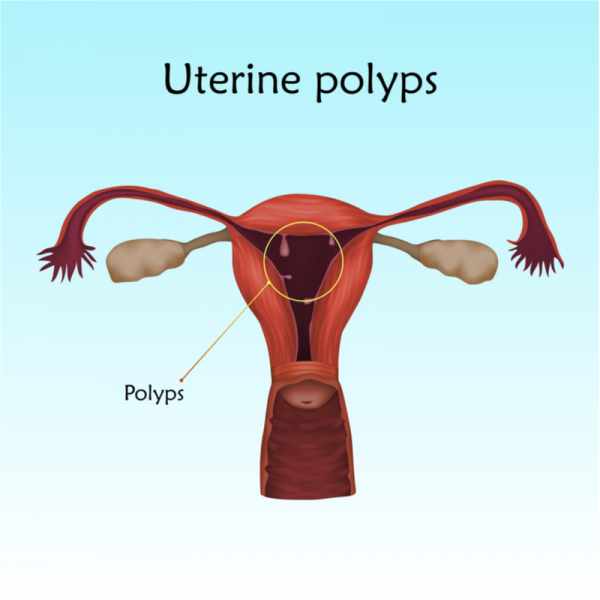
What is a uterine polyp?
A uterine polyp, also called an endometrial polyp, is usually a benign growth of the lining of the uterus caused by increased cell growth. Uterine polyps are usually small and deformable and can sometimes take on a stalk-like structure. Women between the ages of 40 and 50, who are overweight and have high blood pressure, are at increased risk of developing uterine polyps.
How does a uterine polyp develop?
The exact reasons for the development of uterine polyps are still unknown. However, doctors suspect that taking hormones may contribute to the growth of a uterine polyp. Women who have elevated levels of oestrogen are also more likely to suffer from uterine polyps. Women who have taken the oestrogen tamoxifen for breast cancer treatment also have an increased risk of developing uterine polyps.
What are the symptoms of a uterine polyp?
A uterine polyp can cause spotting, irregular menstruation and/or bleeding during the postmenopause. Especially in the postmenopause, uterine polyps can also be responsible for the growth of cystic glands. If they are large pedunculated polyps, labour-like pain may also occur. If you suffer from any of these symptoms or complain of pelvic discomfort, you should see a doctor and get your symptoms checked out.
How is a uterine polyp diagnosed?
A uterine polyp is diagnosed by an endoscopic examination of the uterus called a hysteroscopy. Alternatively, a hydrosonography can be performed, in which physiological saline solution is filled into the uterus. This dilates the uterine cavity to create a clearer picture of the uterus. Because a uterine polyp can also be asymptomatic, women should have an annual gynaecological examination, which can also diagnose a uterine polyp.
How is a uterine polyp treated?
If it is a smaller uterine polyp, it can disappear without treatment. With larger uterine polyps, on the other hand, hormonal therapy must be ordered to both relieve the symptoms and reduce the size of the polyp. The inner walls of the uterus can also be scraped off in a procedure called curettage to remove the polyp. A biopsy is usually performed afterwards to make sure that the uterine polyp has not degenerated. If the biopsy indicates the presence of cancer, total or partial removal of the uterus (hysterectomy) is usually necessary.
Even after successful treatment, uterine polyps can always recur due to increased cell growth. Women who have had a uterine polyp should therefore have a Pap smear every year.
| Pathogen | Source | Members - Area |
|---|---|---|
| Uterine polyp | BIO | As a NLS member you have direct access to these frequency lists |
| Uterine Polyp | CAFL | As an NLS member you have direct access to these frequency lists |
| Uterine Polyp | EDTFL | As an NLS member you have direct access to these frequency lists |
| Uterine Polyp | VEGA | As an NLS member you have direct access to these frequency lists |
